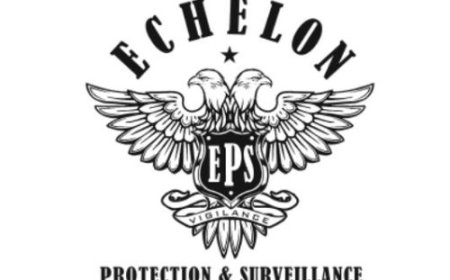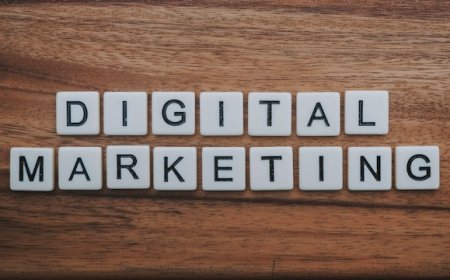How We Scaled Our Traffic with Enterprise SEO Service?
Explore our journey of scaling traffic through expert enterprise SEO service and smart optimization.

Growing website traffic might seem straightforward at first glance, but when you're running a large business with hundreds or even thousands of web pages, things can get pretty tricky. We found ourselves stuck in a rut, trying everything from paid ads to email campaigns, but nothing seemed to make a difference.That all changed when we decided to invest in a professional enterprise SEO service.
In this blog, well walk you through our real experience: what led us to enterprise SEO, how it helped us overcome challenges, and how our traffic started to scalemonth after month. If you're a business dealing with large-scale SEO issues, this story is for you.
The Traffic Struggle We Were Facing
Our company has a big website. We operate in multiple regions, offer several services, and have a lot of landing pages, blog posts, and product listings. Despite having all this content, our traffic was flatlining. Why?
Heres what we discovered:
-
Many of our pages werent optimized for SEO
-
We had a lot of duplicate or outdated content
-
Our website structure was messy and confusing for Google
-
Keywords werent strategically mapped to content
-
We werent ranking for high-intent search terms
-
And worst of all, we didnt even know how bad it was until traffic dropped!
Thats when we realized: our regular SEO tactics werent enough anymore. We needed enterprise-level SEO service to solve enterprise-level problems.
What Is Enterprise SEO Service?
For those unfamiliar, enterprise SEO service is SEO designed for large-scale websites or businesses with complex needs. This includes:
-
Sites with hundreds or thousands of pages
-
Businesses with multiple locations or languages
-
Companies needing technical, on-page, and off-page SEO at scale
-
Brands wanting to dominate in highly competitive markets
Enterprise SEO isnt just about optimizing a blog post or two. Its a full strategy that involves advanced tools, deep technical audits, and long-term planning.
Step 1: The Enterprise SEO Audit
Our first step with the SEO agency we hired was a complete enterprise SEO audit. This wasnt your average quick checklist. They dug deep into:
-
Our website structure and navigation
-
Existing content performance
-
Keyword mapping
-
Technical SEO issues (broken links, redirects, crawl errors)
-
Core Web Vitals and site speed
-
Duplicate or thin content
-
International SEO setup
The audit revealed over 300+ technical issues, keyword cannibalization, and major opportunities wed been missing.
? Big win #1: We finally saw what was holding us back.
Step 2: Fixing Technical SEO Issues
Once the issues were clear, the enterprise SEO team got to work on technical fixes. They:
-
Optimized page speed (compressed images, minified code, fixed server issues)
-
Cleaned up 404 errors and redirected outdated URLs
-
Improved mobile responsiveness
-
Organized our URL structure for easier crawling
-
Implemented canonical tags to avoid duplicate content
-
Set up hreflang for better international targeting
After just a few weeks, Google started crawling our site more efficientlyand traffic from non-branded keywords started rising.
? Big win #2: Our site became technically sound and more visible.
Step 3: Keyword Research and Mapping at Scale
Keyword research at an enterprise level isnt just about picking a few high-volume keywords. The SEO team analyzed:
-
What our competitors were ranking for
-
Gaps in our current content
-
High-converting, long-tail keywords
-
Local and international keyword trends
-
Search intent for different customer stages
They created a keyword map for more than 300 pages. Each page was aligned to a unique set of keywords, helping us avoid duplicate targeting and rank more effectively.
? Big win #3: We had a clear content-to-keyword strategy.
Step 4: Content Optimization and Expansion
Next came contentthe heart of SEO. Our enterprise SEO partner helped us:
-
Refresh and update old blog posts
-
Combine similar pages that were competing with each other
-
Create new service pages for high-intent keywords
-
Add internal links to guide users and search bots
-
Optimize titles, headers, meta descriptions, and image alt texts
They also helped us launch a content calendar, focusing on cluster topics. Instead of writing one-off blogs, we created groups of related content that strengthened our authority in specific areas.
? Big win #4: We saw a steady increase in rankings and engagement.
Step 5: International SEO Strategy
Since we were targeting multiple countries, the enterprise SEO team worked on our international SEO setup. That included:
-
Implementing hreflang tags correctly
-
Creating region-specific content
-
Using subfolders for each country instead of subdomains
-
Optimizing pages based on local search behavior
Soon, we started ranking not just in our home country but also in regions like the U.K., Canada, and Australia.
? Big win #5: We unlocked global traffic potential.
Step 6: Link Building and Authority Growth
While content and technical fixes helped a lot, the SEO team also focused on building high-quality backlinks. They did this through:
-
Guest posting on niche-relevant sites
-
Getting us mentioned in online publications
-
Earning backlinks through digital PR
-
Outreach to industry blogs and influencers
As our domain authority increased, so did our rankings. And not just for low-competition termswe started showing up on page 1 for major industry keywords.
? Big win #6: We gained trust and visibility in search engines.
Step 7: Reporting, Tracking, and Iteration
The best part about working with a professional enterprise SEO service is the clarity and transparency they offer. Every month, we received:
-
Traffic reports by region
-
Keyword ranking updates
-
Conversion tracking
-
Page performance data
-
Recommendations for improvement
This allowed us to double down on what worked and fix what didntquickly.
? Big win #7: Data-driven decision-making replaced guesswork.
The Results After 6 Months
We didnt expect overnight miracles. SEO takes time. But after six months of consistent work, heres what we achieved:
-
? Organic traffic increased by 178%
-
? 190+ keywords ranked on page 1
-
? Leads from organic search doubled
-
? International traffic made up 35% of all sessions
-
? Bounce rate dropped by 27%
-
? Monthly revenue from SEO traffic grew by over 60%
The return on investment? More than 5xand its still growing.
Key Takeaways for You
If youre considering enterprise SEO for your business, here are a few things we learned:
-
Regular SEO isnt enough for large websites.
You need scalable strategies that go beyond basic keyword stuffing and link building. -
Enterprise SEO is a long-term game.
It takes timebut the results compound over months and years. -
A specialized team makes all the difference.
Dont try to do this in-house unless you have an SEO-dedicated department. -
Content and technical SEO go hand in hand.
You cant ignore either if you want sustainable growth. -
Data should guide everything.
Enterprise SEO services dont just executethey analyze and adapt constantly.
Final Thoughts:
We started off with slow traffic, unorganized content, and zero insight into how to scale our visibility. But once we partnered with the right enterprise SEO agencyeverything began to change.
Now, were not just getting trafficwere getting the right traffic, turning visitors into leads, and leads into customers.
If youre a growing business with a large website and big ambitions, working with an experienced enterprise SEO agency might be exactly what you need to unlock your full online potential.





























